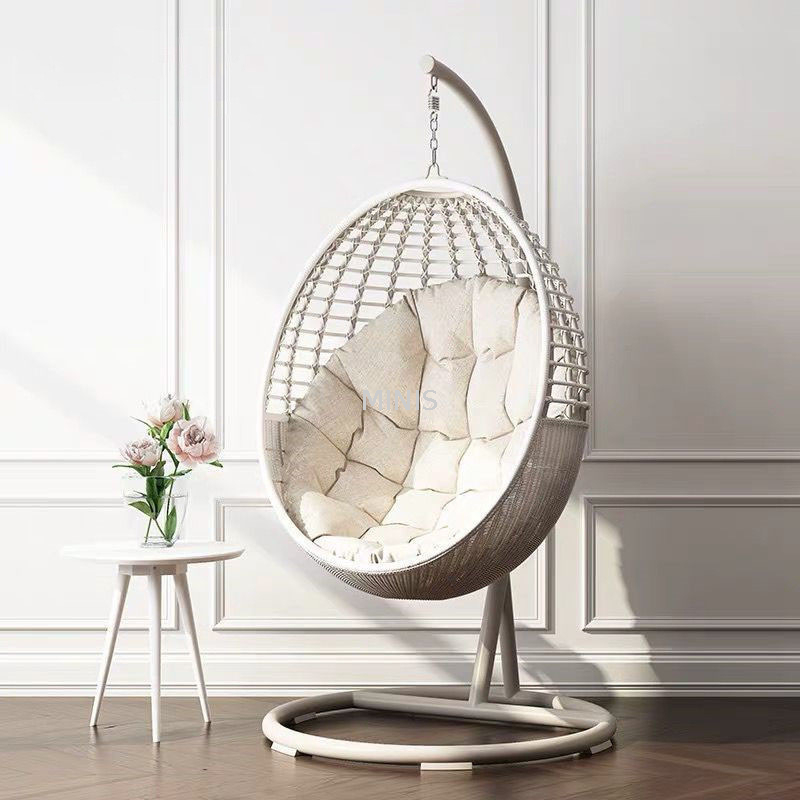Views: 0 Author: Site Editor Publish Time: 2025-09-29 Origin: Site








Outdoor chairs are essential for creating a comfortable and inviting space for relaxation and enjoyment. However, exposure to the elements can lead to wear and tear, making repairs necessary to maintain their functionality and appearance. In this guide, we'll walk you through the essential steps to assess damage, gather materials, and perform effective repairs on your outdoor chairs, ensuring they remain sturdy and stylish for many seasons to come. Whether you're dealing with loose joints, damaged fabric, or weathered finishes, our comprehensive approach will help you restore your outdoor furniture to its former glory.
Before fixing outdoor chairs, it's important to carefully check the damage. This step helps you understand what needs repair and how to do it best.
Start by testing the chair’s stability. Sit on it or press different parts to see if it wobbles or feels loose. Look closely at joints where pieces connect. If joints move or creak, they might be loose or broken. Also, check legs and arms for cracks or bending. These signs mean the chair might not be safe to use until repaired.
If your chair is wooden, examine the wood closely. Look for cracks, splits, or splinters. Wood exposed to rain or sun can rot or become soft. Tap the wood gently; hollow sounds may indicate rot inside. Also, check for peeling or worn finish. Bare wood is more vulnerable to damage and needs protection.
Look at screws, bolts, and nails holding the chair together. Rusty or missing fasteners can weaken the chair. Tighten any loose screws. If fasteners are corroded or broken, plan to replace them. Using stainless steel or weather-resistant hardware helps prevent future rust.
For chairs with fabric, mesh, or sling seats, inspect the material for tears, sagging, or holes. Sun exposure can weaken fabric fibers, causing sag or breakage. If the seat sags too much, it may need tightening or replacement. Small tears can sometimes be patched, but large damage usually requires new fabric.
Finally, look at the chair’s overall appearance. Faded paint, chipped varnish, or discoloration may not affect function but impact look. Refinishing can restore beauty and add protection. Decide if you want to do a simple clean-up or a full sanding and repaint.
Always document the damage thoroughly before starting repairs to plan materials and tools effectively.

Before repairing your outdoor chairs, gather all necessary materials and tools. Having everything ready makes the process smooth and efficient.
Start with these basic tools:
● Screwdrivers: Both flathead and Phillips types help remove or tighten screws.
● Clamps: These hold glued parts firmly while drying.
● Hammer and Mallet: Useful for loosening or fitting parts.
● Sandpaper and Sanding Block: Needed for smoothing surfaces and preparing for refinishing.
● Drill: Handy for making holes or driving screws quickly.
● Measuring Tape: Ensures accurate measurements for replacement parts or fabric.
● Pliers and Wrenches: Help remove or adjust nuts, bolts, and fasteners.
● Paintbrushes or Rags: For applying finishes or sealants.
Materials vary depending on your chair’s style and damage:
● Wood Glue: Ideal for fixing loose or broken wooden joints.
● Replacement Hardware: Screws, bolts, or nails made of rust-resistant materials like stainless steel.
● Wood Filler: Fills cracks or holes in wooden parts.
● Protective Finishes: Outdoor paint, stain, or sealant to protect wood from weather.
● Fabric or Mesh: For sling or fabric seats, use durable, weather-resistant material.
● Vinyl Straps: For strap chairs, replacement straps or strap rolls are necessary.
● Foam or Cushion Material: To replace worn or damaged cushions.
Safety is key during repairs:
● Gloves: Protect your hands from splinters, sharp edges, or chemicals.
● Safety Goggles: Shield your eyes from dust, debris, or splashes.
● Dust Mask: Prevents inhaling dust during sanding.
● Work in a Well-Ventilated Area: Especially when using paints or adhesives.
Always read instructions on products and tools before use. Keep your workspace tidy to avoid accidents.
Organize your tools and materials before starting repairs to save time and avoid interruptions during the process.
Fixing broken or loose joints is one of the most common repairs for outdoor chairs. These joints keep the chair sturdy. When they fail, the chair can wobble or even break. Here’s how to repair them step-by-step.
First, take apart the chair parts around the damaged joint if you can. Removing screws, bolts, or nails helps you access the joint better. This step also lets you clean old glue, dirt, or debris. Use a brush or cloth to clean the surfaces. Clean surfaces help glue stick better, making the repair stronger.
Next, apply a good quality wood glue to the joint surfaces. Spread the glue evenly on both sides of the joint. Choose wood glue made for outdoor use since it resists moisture and heat. After applying glue, press the joint parts together tightly. Use clamps to hold the pieces firmly in place while the glue dries. Clamping squeezes out excess glue and creates a strong bond. Follow the glue’s drying instructions carefully — usually, 24 hours is best.
Once the glue is dry, remove the clamps and put the chair back together. Tighten screws or bolts to reinforce the joint. If the original fasteners are rusty or weak, replace them with stainless steel or weather-resistant ones. This extra support helps keep the joint stable for longer. Check the chair by gently pressing or sitting on it to make sure it feels solid.
Finally, sand any glue residue or rough spots around the repaired joint. Smooth surfaces look better and prevent splinters. If the chair has a finish, apply paint, stain, or sealant to match the rest of the chair. This step protects the wood from weather damage and blends the repair seamlessly.
When clamping glued joints, place protective pads between clamps and wood to avoid dents or marks on your chair.
When outdoor chairs suffer heavy wear or damage, some parts may need replacing to restore function and look. Whether it’s a cracked wooden slat, torn fabric, or broken hardware, swapping out damaged components is key to bringing your chair back to life. Here’s how to do it step-by-step.
Start by inspecting the chair carefully to spot parts beyond repair. Look for:
● Cracked or split wood pieces, like legs or armrests
● Broken or missing screws, bolts, or brackets
● Torn or sagging fabric, mesh, or vinyl straps
● Damaged cushions or foam inserts
Take notes or photos to remember which parts need replacing. This will help when you shop for new components.
Next, find replacements that match your chair’s style and size. Some tips:
● For wood parts, try local lumber yards or woodworking shops for matching wood types and dimensions.
● Hardware stores often carry stainless steel or rust-resistant screws and bolts designed for outdoor use.
● Fabric and mesh seats require weather-resistant materials; many outdoor furniture suppliers sell replacement sling fabric or vinyl straps.
● Cushions can be replaced or re-covered with outdoor foam and fabric found online or in upholstery shops.
If possible, bring the damaged part or detailed measurements when buying replacements. This ensures a proper fit and look.
Remove the damaged parts carefully, keeping track of how they fit and connect. Use screwdrivers, pliers, or wrenches as needed. Clean the surrounding area before installing new parts.
When installing replacements:
● Align parts precisely to maintain chair stability and comfort.
● Use appropriate fasteners and tighten securely but avoid over-tightening, which can crack wood or strip screws.
● For fabric or straps, stretch them taut but not overly tight to prevent sagging or tearing later.
● If replacing cushions, ensure they fit snugly and provide proper support.
Test the chair’s stability and comfort after installation. Make adjustments if needed.
New parts may look different from original ones. To blend them in:
● Sand wooden replacements smooth and apply matching stain, paint, or sealant.
● Use outdoor fabric protectors or UV-resistant sprays on new fabric or straps.
● Replace any missing caps or covers on hardware for a polished look.
This step enhances durability and keeps your chair looking cohesive.
Replacing damaged parts may seem daunting but is often straightforward. It saves money, extends your chair’s life, and keeps your outdoor space inviting. With the right parts and care, your chair will be ready for many more seasons of use.
When ordering replacement fabric or straps, keep the old piece on the frame while measuring to ensure accurate sizing and fit.

Restoring outdoor chairs often means sanding and refinishing. This process removes old, weathered layers and protects the wood from future damage. Let’s break down the steps so you get a smooth, long-lasting finish.
Start by cleaning the chair thoroughly. Remove dirt, dust, and any loose paint or finish using a brush and mild soap solution. Let it dry completely.
If there’s old paint or varnish, use a paint stripper or sanding to remove it. This exposes fresh wood, which helps new finishes stick better. Be gentle around delicate details to avoid damage.
Check for any cracks or holes. Fill these with wood filler, then let it dry. Sand the filler smooth so it blends with the wood surface.
Use sandpaper of different grits in stages:
● Coarse grit (60-80): Removes rough spots, old paint, or finish quickly.
● Medium grit (120-150): Smooths out the surface after coarse sanding.
● Fine grit (220): Prepares the wood for finishing, leaving a smooth texture.
Sand along the wood grain to avoid scratches. For curves or tight spots, use sanding sponges or folded sandpaper. After sanding, wipe the chair with a damp cloth to remove dust.
Choose a finish suitable for outdoor use, like:
● Exterior wood stain: Adds color and enhances the wood grain.
● Clear sealant or varnish: Protects wood from moisture and UV rays.
● Outdoor paint: Offers strong protection and can add vibrant color.
Apply the finish evenly using a brush or rag. Follow the grain, and avoid drips or pooling. Let the first coat dry fully, then lightly sand with fine grit sandpaper before applying a second coat. Multiple coats build better protection.
For best results, apply a UV-resistant finish to prevent fading and cracking from sun exposure. Also, consider water-repellent finishes to keep moisture out.
Inspect the chair after the last coat dries. If you see rough spots or uneven color, lightly sand and add touch-ups.
Add felt pads or rubber caps to the chair legs to protect surfaces and prevent moisture from seeping in.
Store your chair in a covered area or use furniture covers when not in use to extend the life of your finish.
When sanding, always wear a dust mask and work outdoors or in a well-ventilated space to avoid inhaling wood dust and fumes from finishes.
Repairing outdoor chairs involves assessing damage, gathering materials, fixing joints, replacing parts, and refinishing. Regular maintenance prevents future issues and extends chair life. DIY repairs are cost-effective and rewarding, enhancing your outdoor space's comfort. Foshan Minis Furniture Co., Ltd. offers durable, stylish furniture, ensuring long-lasting value and quality. Their products help create inviting outdoor areas, perfect for relaxation and enjoyment.
A: Start by assessing the damage, focusing on structural integrity, wood condition, hardware, seating surface, and overall finish of the outdoor chair.
A: Disassemble parts around the joint, clean surfaces, apply outdoor wood glue, clamp tightly, and reassemble using weather-resistant fasteners.
A: Sanding removes old layers, smooths surfaces, and prepares the outdoor chair for refinishing, ensuring a long-lasting and protective finish.
A: Use durable, weather-resistant fabric or mesh for sling seats, and outdoor foam for cushions to ensure longevity and comfort.